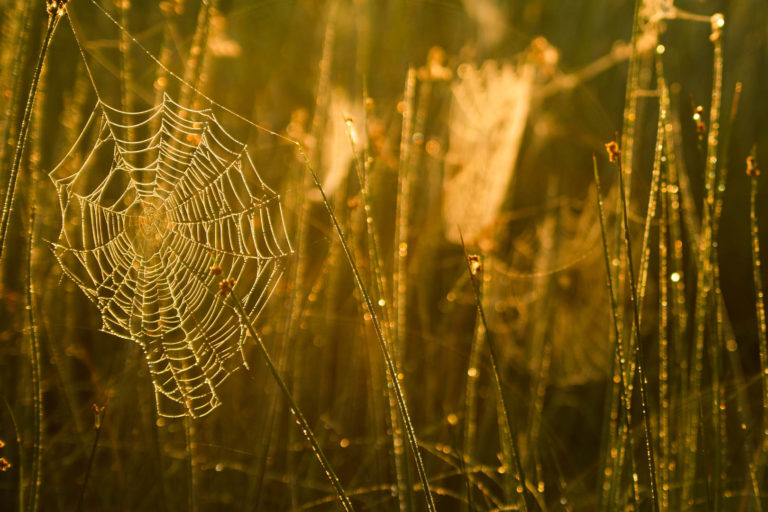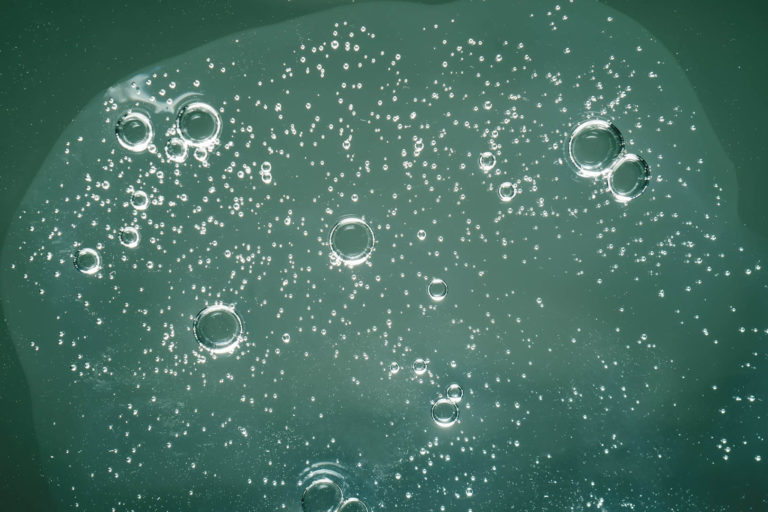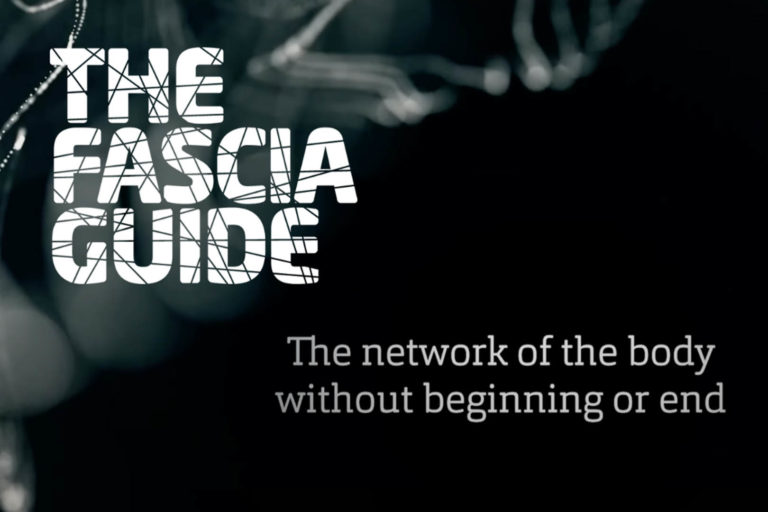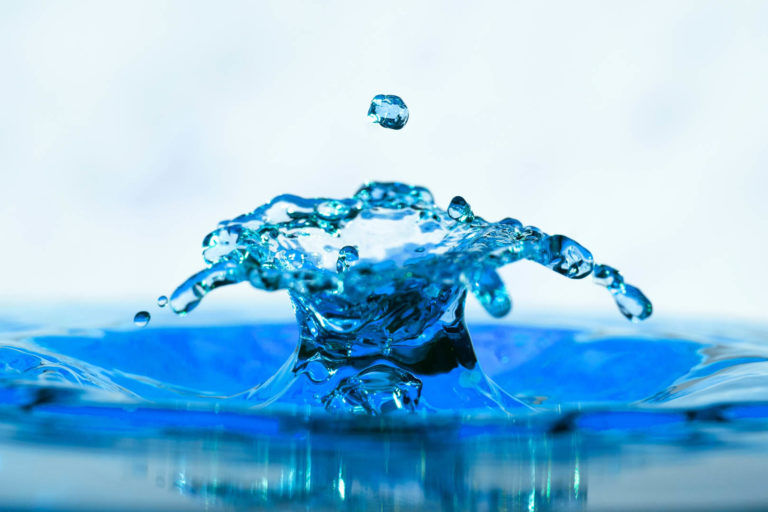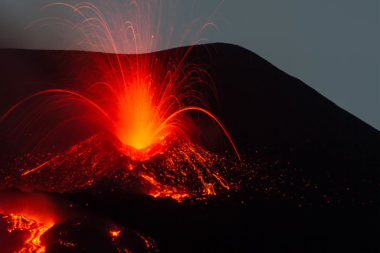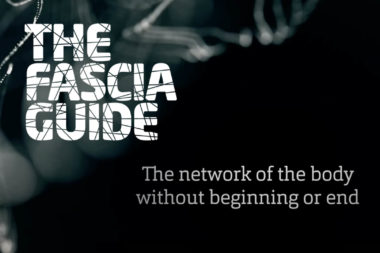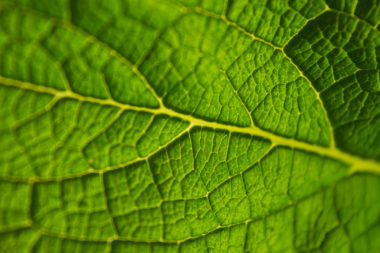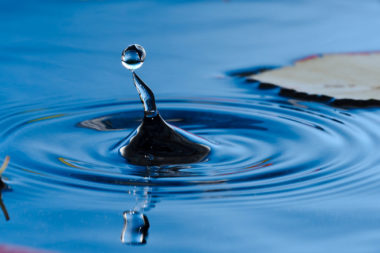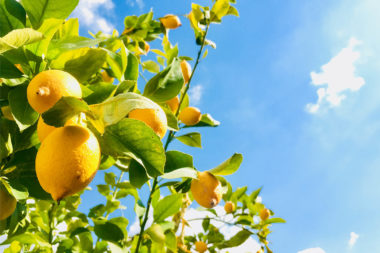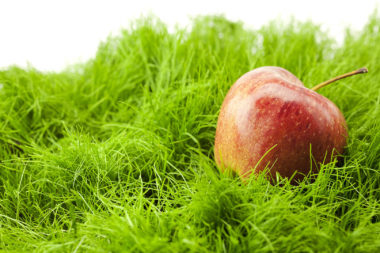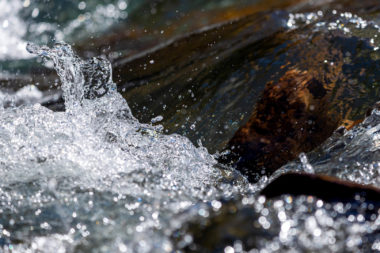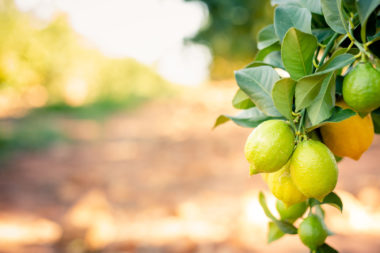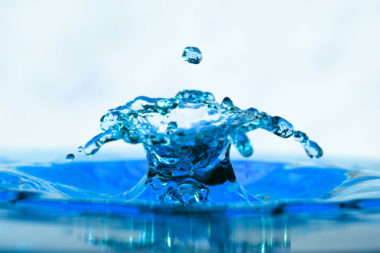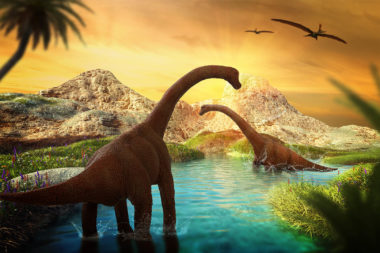

Embryology of fascia
During the embryonic development of higher animals (from flat worms to humans, in the beginning we all look the same), three primary layers of cells forms, germ layers, which give rise to all tissues and organs in the animal. The three layers are called ectoderm, mesoderm and endoderm (see below) and it is the mesoderm which is the origin of fascia, skeletal, cartilage and muscle, all components which are associated with locomotion. More primitive animals have only one or two germ layers, they are lacking in mesoderm. When the human embryo is about two to three weeks old, the fascia begins to form from the mesoderm. The three germ layers are;
- Ectoderm – The outer (ecto) layer, form the outer skin, hair and nails, the nervous system, ectochrine glands and the dentin and tooth enamel.
- Mesoderm – The middle layer, form the fascia. This layer also forms all kind of muscles (skeletal, smooth and cardiac), bone tissue, cartilage, dermis and hypodermis, circulatory system, blood cells, lymphatic system, spleen, mesentery, adipose tissue, notochord, meninges (membranes of the brain and spinal cord), urogenital system, kidneys and more.
- Endoderm – The inner layer, form the epithelial inner layer of the whole digestive tract, glands like liver and pancreas, respiratory system, bladder, thyroid and thymus.
First to develop from the mesoderm is the mesenchyme, an embryonic connective tissue. It consists of stellate cells with long spurs, with which they communicate with each other. The extra cellular matrix (ECM), between these cells, is a light fluid with thin embryonic fibers of collagen type III. Most of this ECM fluid consists of hyaluronan and water.
Some research wants to claim that the fascia can be found in the ectoderm (van der Wal, 2009). Recent research has also found a fascial link between fascial fibers of muscles in the poll, sensory nerves and the dura mater (the outer of the meninges), called the myodural bridge (Hack et al, 1995), (Scali et al, 2011, 2013, 2015), (Zheng et al, 2014, 2018). The same connection has now been found in horses and several other mammals, as well as in chickens and reptiles (Elbrønd & Schultz, 2019), (Zheng et al, 2017), (Dou et al, 2019), (Zhang et al, 2016). More about this in another item.
- By Camilla Ranje Nordin, Teacher in Fascia & Fascia Treatment

Fascia Anatomy & Physiology
Hyaluronan
Hyaluronan has a number of important physiological functions in our body and is critical for the slide and glide effects between muscle fibers and fascial sublayers. Therefore, it greatly affects our ability to move in balance and it helps maintain tissue homeostasis.
Guimberteau
Surgeon Jean Claude Guimberteau has spent 15 years conducting over 1,200 examinations of Fascia, which he filmed with an endoscope in vivo (in a living subject)
What is special about viruses?
A virus consists of genetic material, DNA or RNA, protected by a protein shell. It is so small that it can only be seen with powerful electron microscopes.
Extracellular Matrix (ECM)
The extracellular matrix (ECM) is a scaffold where the cells exist. It mainly consists of fiber proteins and a fluid part, the ground substance.
What happens in the Fascia when we treat with vibrations?
Fascia creates a three-dimensional network in the body of alternating loose and dense connective tissue that enables all cells and organ systems in the body to collaborate as an integrated whole.
The Fascia Movie – The Body’s Network Without Beginning or End
“Fascia – The Body’s Network Without Beginning or End” is a documentary about how new research profoundly changes the way we look at the living human body.
Embryology of fascia
During the embryonic development, three primary layers of cells forms, which give rise to all tissues and organs. One of them is the origin of fascia, skeletal, cartilage and muscle, all components which are associated with locomotion.
Fascia and The Living Body
“Fascia and the Living Body” is a document about the scientific understanding of the body as a living whole.
What is fascia – in detail
Our entire body, all tissues, consists of cells and the substance that exists outside, around the cells, that is the extracellular matrix. With these explanations of fascia you understand how important it is to see the body as a whole and not part by part.
Fascia – a New Anatomical Perspective
Recent research in recent years shows that Fascia has a much greater significance for health, aches, and pain than previously believed.
The components in fascia
The body consists of cells and the matrix outside, between the cells, the extracellular matrix (ECM). Fascia is the ECM and the cells maintaining the ECM. In this article the components of the Fascia are listed and explained.
Fascia as a flow – a new way of explaining the body’s function
By beginning to see the body as something that is alive, and not something that is dead, we have been able to begin to notice other things.
The important role of the lymphatic system
The lymphatic system consists of a network of lymphatic vessels and various lymphatic organs such as lymph nodes, thymus, spleen, tonsils and lymphatic tissue in mucous membranes.
Fascia Expert: “An explosion of new research in the last 10 years”
In 2015 veterinary Vibeke S Elbrønd published the first report on Fascia and horses. To make that happen she had to learn all there was regarding fascia, she had to become a fascia expert.
The immune system: How it works & how to boost it
You probably know that the immune system is our defensive wall protecting us from the threats from the outside world – but do you know how it works and how to boost it?
The Fascia Movie – The Body’s Network Without Beginning or End
“Fascia – The Body’s Network Without Beginning or End” is a documentary about how new research profoundly changes the way we look at the living human body.
Disease is excess oxidation
Diseases are an excess of oxidation – Redox physiology is an excess of oxidation greater than reduction.
Can you heal osteoarthritis?
The function of the articular cartilage is to reduce friction between the two articular cartilage surfaces and facilitate sliding when the joint moves, and to absorb the load when the joint is exposed to pressure, compression
Fascia Research Database
Fascia research has sparked an ongoing global revolution in the anatomical research field. In The Fascia Guide Research Database we have gathered hundreds of research articles about fascia.
Fluid flow in the fascia & how it is affected by treatment & vibrations
Recently, a German researcher showed that the connective tissue in a human transports 15 l of water in 48 hours, which is a relatively large amount compared to for example the amount of blood and the lymphatic system.
Are my problems related to Fascia?
Most of the questions we receive are about various issues and discomforts related to Fascia. How can Fascia represent a new way to treat and prevent problems?
Training for strengthened Fascia
Exercise increases collagen production in tendons, ligaments and all Fascia. To stimulate collagen formation in tendons and ligaments, it doesn’t matter if the exercise is eccentric (muscle contraction during extension) or concentric (muscle contraction during shortening).
The influence of mechanical forces on Fascia?
Connective tissue / fascia is an incredibly adaptable and plastic tissue. It is transformed, remodeled and strengthened or weakened according to the mechanical stimulation (load) to which it is exposed. If we don’t move, the tissue will diminish.
Growing interest in Fascia treatment: “Fascia problems are often under diagnosed”
David Lesondak is a structural integrator and a myofascial specialist who has been working for many years trying to explain what fascia is, as well as the benefits you get from treating different problems with fascia treatment. In an interview at the Fascia Research Congress in Berlin 2018, he describes the basics of what fascia is and what challenges it is facing in the strive for recognition in the medical field.
Stretching the fascia is vital when recovering from injury
David Lesondak describes how stretching the fascia is vital for rehabilitation from injury at the 2018 Fascia Research Congress in Berlin
Fascia in Horses – Danish veterinary exploring uncharted territory
In 2015 veterinary Vibeke S Elbrønd published the first report on Fascia and horses. Through autopsy she found that the horse has the same kind of chains and networks of connective tissue through the body, as found in humans.
What is Biotensegrity? Interview with Dr. Stephen Levin
Exclusive interview with Dr Stephen Levin, the worlds leading expert on Biotensegrity, at the Fascia Research Congress 2015.
Is fascia affected by sex hormones?
Banbrytande ny forskning visar hur kollagenproduktionen över hela kroppen påverkas av könshormoner, som t ex östrogen. Läs mer här
What is fascia and in what way does fascia change the whole way of looking at the body?
Fascia is a network of connective tissue, without beginning and end, which encloses everything in the whole body, from muscles and bones, to organs and cells. But what does that mean?
Inflammation in Fascia causes pain – new discoveries presented in Stockholm
Dr Heike Jäger, Professor Karl Arfors and innovator Hans Bohlin presented the latest research regarding Fascia, inflammation and Fascia treatment in Stockholm, May 2017.
Anatomy Trains by Tom Myers helps us understand functions of movement
Tom Myers is perhaps best known for his book Anatomy Trains, where he describes the Myofascial lines which help us understand movement and functions of the body
New Fascia Research has taken us back to an observing stage
The new discoveries and knowledge about Fascia has taken us back to an observing stage – we have to investigate our surroundings to get an understanding for what to measure.
Fascia – a New Anatomical Perspective
Recent research in recent years shows that Fascia has a much greater significance for health, aches, and pain than previously believed.
Understanding Fascia in 10 minutes – the must see German documentary
In early 2013, a German documentary was broadcast based on the latest research on the Fascia. It provides a very basic introduction for newcomers. To help you get a quick overview of Fascia, we have cut together a 10 minute version.
Therefore, the researchers believe that the nervous system resides in Fascia
The fascial network exists in various compositions, structures, and configurations throughout the entire body and is a crucial and essential part of the body’s function…
What causes back pain?
New research shows that low back pain is caused by inflammation in the Fascia. But why are we getting low back pain and what happens in our body when we get back pain?
7 things you should now about Vitamin C
Vitamin C is good for the immune system, but did you know that it also supports tissue regeneration or that we use up 7 times more Vitamin C during stress?
Fascia: New research changes the way we look at pain
From Newton, to Einstein, to the new wildfire of Fascia Research. How do we understand things from a different perspective?
Why do so many female football players suffer from cruciate ligament injuries?
A lot of injuries after a long break might not be that unusual – but why do so many female athletes suffer from cruciate ligament injuries?
Frequently Asked Questions about Fascia
On the Fascia Guide FAQ we have gathered the most common questions and answers about Fascia. Is there anything you would like to know? Visit the page and submit your question.
Strolling under the skin: How does it look inside a living body?
Strolling under the skin is a fascinating journey inside a living body. With small camcorders, Dr. Jean Claeude Guimberteau has managed to capture how Fasica actually looks in a living human body.
Fascia helps us understand the body as a whole
Look at a ballet dancer, a gymnast or a drummer and study their movement, feeling, timing, it is easy to be fascinated by how fast it is. Fascia helps us understand how the body is able to function in such an incredible way.
We have been preparing our whole lives to NOT be able to understand the importance of fascia
To truly understand Fascia, you must understand the whole. But how do you do that if you have trained all your life to divide and separate?
The importance of vitamin C in pregnancy, childbirth and jaundice in newborns.
Vitamin C has many different actions in the body. It is a coenzyme, which assist in various physiological processes in the body and it is a powerful antioxidant.
How do we learn to understand Fascia?
Fascia is a new perspective, a completely new way of looking at the body, a new way of conducting research and a new way of understanding the world. So how do you learn to understand Fascia?
Problems linked to Fascia
Fascia is a system of flexible connective tissue encapsulating everything in the body. If the system is running smoothly, all is fine, but when some parts become stiff, tense or inflamed, there will be consequences.
To understand Fascia we need to cross the bridge & see things from another perspective
Exclusive interview with Gil Headly explaining how Fascia changes the perspective on how we look at the body at the 2015 Fascia Research Congress in Washington DC.
Get the lymph flow!
Keep the flow of lymph alive! What can I do to increase the lymph flow?
Fascia Lines are the intersections of the body
The concept of Fascia Lines is a great way to understand how the body functions and how treatment can be optimized to increase mobility and functionality. The main principle is that muscles, no matter what they do individually, also affect tissues throughout the entire body.
Fascia does not only envelope the whole body, it turns the way we look at the body upside down
At the 2015 Fascia Research Congress in Washington DC, Tom Myers, the author of Anatomy Trains, gives a short introduction to Fascia and how new research changes the way we look at pain and discomfort.
What is Fascia? Connective tissue in a system with no beginning & no end
What is Fascia? New research shows that it is more than the layer around the muscles. It is a network without beginning or end, from the skin, through the entire body, to the smallest cell.
Fascia as a flow – a new way of explaining the body’s function
By beginning to see the body as something that is alive, and not something that is dead, we have been able to begin to notice other things.
Why Fascia is still relatively unknown
Here are three major reasons why the Fascia’s central importance to the body’s functionality is not nousehold knowledge. It might be helpful to bare these in mind when relating to current and previous research.
Why is resistance to vitamin C still so great?
Why do all “experts” on TV say that we don’t need or that it’s harmful to take extra vitamin C?
Fascia and The Living Body
“Fascia and the Living Body” is a document about the scientific understanding of the body as a living whole.
The mysterious world under the skin – German Fascia Documentary from 2018
Get a deeper introduction to new Fascia Research with the 2018 German documentary “The mysterious world under the skin”.
The discovery of a new cell at the 2018 Fascia Research Congress in Berlin
Fascia research has sparked a wildfire of new insights that are challenging conventional belief about how the body works – and the latest insights are presented at the 2018 Fascia Research Congress in Berlin.
Fascia loads and unloads pressure
What do we know about the Fascias function and what affects the Fascias ability to rebuild – and how can we use that knowledge in our everyday lives?
Stress and sugar harms fascia functions
What we do know for sure is that the abundance of sugar has a negative effect on the fascia and makes it less elastic. Stress also affects the fascia in a disadvantageous way
The Fascia Guide Method
During the last couple of years we have developed a simple but powerful method of communication, used by hundreds of health professionals, to inspire their customers & improve relations.
Is cancer fascia related? New insights presented in Boston 2015
New research leads to insights and by looking at the body in a completely new way we get new perspectives and explanations to symptoms and diseases. At the 2015 Joint Conference on Acupuncture, Oncology and Fascia in Boston, research was presented regarding Fascia and Cancer
9 tips: How to keep your Fascia healthy and balanced
One of the best ways to keep yourself healthy, free from pain and injuries is to take care of your Fascia. Here are 9 tips on how to take care of your Fascia.
Fascia is the largest organ in the body
Fascia or interstitium? Two different terms for the body’s “newly discovered” largest organ.
Biotensegrity: How did the dinosaurs handle the pressure of gravity?
In the 70s when the orthopedic surgeon Dr. Stephen Levin was at a natural history museum and saw the wires holding up the neck of a dinosaur, he did not get the picture to go together. How could his neck have been held up originally?

